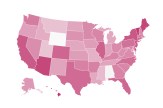No tricks, just treats: The real story of Halloween

You might have grown up carving pumpkins and munching candy on Oct. 31, but did you know these modern rites of autumn have origins in ancient rituals? Two Northeastern faculty members explain the traditions of Halloween.
Samhain
Most of our Halloween traditions originate from Samhain, an ancient Celtic holiday celebrated on Oct. 31 to mark the end of the harvest season. “It was believed that on this day the partition between the supernatural and the natural world broke down, and spirits became visible on earth,” says Francis Blessington, an English professor who is currently writing a book about 17th century witchcraft, “It was a day when people honored the dead.”

Allhallowtide
The Celts inhabited what is today Ireland, Scotland, Wales, and northern France. When the Roman Catholics came to these areas in the fifth century, they imposed Christian traditions on the pagan Celts. “Basically, the Catholics told the Celts, ‘We also honor the dead, but we’re going to show you how we do it,’” says Megan Goodwin, a religion and philosophy lecturer who specializes in gender, sexuality, and contemporary American minority religions.


Samhain became a three-day Catholic celebration called Allhallowtide that spans All Hallows’ Eve (Halloween) on Oct. 31, All Hallows’ Day (All Saints’ Day) on Nov. 1 and All Souls’ Day (Day of the Dead) on Nov. 2.

Jack-o-lanterns
The candle-lit, carved pumpkins we know today as Jack-o’-Lanterns originally come from folklore’s explanation of spontaneous bog fires called Will-o’-the-Wisps. “These gas fires were caused by rotting wood, but people believed they were evil spirits trying entice them into the woods,” Blessington said.


To keep the demons away, people began creating their own flickering spirits out of gourds. They were named Jack-o’-Lanterns after the Irish tale of “Stingy Jack,” a drunk who made a pact with the devil and was doomed to roam the earth with only a candle fashioned from a hollowed-out turnip to light the way.

witches
“Witches believed Christians had it wrong, that Satan was god, so they would do things in opposition with the church, like say the lord’s prayer backwards, or try to communicate with the dead,” Blessington said. Witches, among other groups of people, honored the dead around Halloween, when they believed the veil between earth and the afterlife was lifted. Witches used this time to conjure the evil spirits other people tried to ward off as part of their devil worship.

Costumes
In early Celtic traditions, people wore costumes during Samhain to hide themselves from evil spirits. But the tradition of dressing like a witch at Halloween didn’t come until long after the wave of witchcraft swept through Europe in the 17th century. “Back then, everyone in Europe wore hats and dressed in all black, not just witches,” Blessington said. Today people dress like witches on Halloween because they are associated with the holiday for all the reasons mentioned above.

Trick or treat
Trick-or-treating is another element of the costume tradition. Celts used to dress up as evil spirits then go door to door, begging for food, and threatening to curse the household if they were turned down. “People would do anything to appease the dead or get rid of evil spirits,” Blessington said.


“So if someone came to their house dressed as a demon, and they didn’t give them something to eat, and then two months later their pig was dead, they would blame themselves for not feeding the demons.” Today the costume tradition remains, though it’s far less dire. Those costumed visitors aren’t vengeful witches terrorizing your neighborhood; they’re just sticky-fingered kids looking for a Kit Kat.






